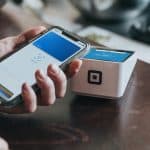Whether you’re new to the restaurant business or opening the latest in a chain of locations, choosing the right POS system for your needs is a process that’s only becoming more complex as technology progresses and more and more options become available.
Gone are the days of simply using a stand alone cash register. Modern POS systems offer advantages that can help automate and streamline many aspects of your day-to-day business.
From employee management to tracking inventory to customer relationship management to increased payment options and more, if you’re not taking advantage of this growing technology, you’re ceding the field to other establishments that are.
You’re also wasting a fair amount of effort on tasks that a good POS system can get done in a fraction of the time, as well as missing out on exciting new ways to engage with and market to your customers.
So, what are the options?
There are basically two types of POS systems to choose from. The more traditional on-premise system or the more modern cloud-based alternatives (POS apps).
Traditional POS
The most obvious distinction between traditional and cloud-based POS systems is the location of the guts of the system; the place where data is stored and transactions are processed.
A traditional system runs on a local server kept somewhere on premises. The parts of the system with which you and your employees will actually interact include stationary terminals with touchscreens where team members input customer orders and process payments. For basic functionality, you’ll also need a credit card reader, a cash drawer, and a receipt printer (or several of each if your facility is large).
Traditional POS systems offer the comfort of familiarity. Anyone who has worked in a restaurant since the 80’s has used one, and they can still be found in most restaurants today. They can also offer peace of mind for those of us who are still wary of not having their data stored on-site, on a physical server that they can see and touch, and simply unplug if it attains consciousness and tries to take over the universe (full disclosure: this has never happened, and experts assure us it won’t).
Some features that can be provided by traditional systems, in addition to the obvious, include the handling of reservations, inventory management, managing takeout and delivery orders, and some sales reporting and forecasting data. Traditional systems are tried and true, and they’re a known quantity. It’s a system that has worked for years and that still reliably offers the standard POS services.
There are downsides to the traditional model, however, with the most obvious being cost. The software required to power a traditional system can cost up to thousands of dollars in licensing fees, as can the various pieces of hardware required to complete the system. Add in complex and time-consuming installation, maintenance, and additional licensing fees to upgrade your software, and costs can rise as high as $50,000/year.
A traditional system is typically not as easy to use as newer cloud options, and generally doesn’t offer the wide range of features that can be found in the cloud.
Cloud-based POS
Cloud-based systems, on the other hand, are generally leaner, meaner, more flexible, easier to maintain, and less expensive to set up and upgrade than their traditional counterparts.
Remember all the hardware and installation mentioned above? Instead of expensive servers, lengthy installation and training for your staff, exorbitant software licensing fees, and more, most cloud-based systems can be run from an iPad or Android tablet. Yes, you’ll still need cash drawers, receipt printers, and card readers, but instead of being proprietary (and expensive) parts tailored only for a specific hardware setup, you can generally choose from a variety of cheaper, universal options made to work with any of a variety of cloud-based systems.
Software for these systems is also simpler and often significantly less expensive.
Whereas a traditional system requires software that powers all of its peripheral components as well as doing the work of processing the data in-house, cloud system software need only be complex enough to power the interface on your tablets of choice.
All processing is done in the cloud. This means you pay a monthly subscription fee instead of massive up-front hardware costs and software licensing fees, and software upgrades are downloaded automatically at no additional cost. Cloud-based systems are also much more easily (and economically) scalable as your business grows.
Total cost? Somewhere between $600-$10,000/year, depending upon the size of your operation and the features you choose.
As for features, cloud-based POS app systems generally offer a much wider range of possibilities than traditional options, including complex sales reporting features that automatically keep track of things like:
- Total sales
- Sales by menu item, category, and promotion
- Statistical averages, such as amount spent per customer
- Payments and payment types
- Staff activity: sales by employee, tips, etc.
- Discounts, voids, and deletions
- Taxes and general accounting
- End-of-day summary reports
These systems can also handle everything from employee scheduling and management to inventory management to customer loyalty and rewards programs and other marketing tools based on specific data and compiled from your own customers based on their purchase histories, likes, dislikes, and more.
Solutions like OneDine offer easy initial setup and data-driven insights to make your operations more efficient and your service more personalized.
Guests can easily check-in, order, and pay right from their mobile device without having to wait for wait staff to get to them. Guests can also receive customized recommendations by inputting their dietary preferences, favorite cuisines, dishes, spice levels, and more.
What’s right for you?
Ultimately, only you can decide what type of system is right for you. But when you consider how quickly the technology is evolving and how much more easily, quickly, and cost-effectively you can keep up with and take advantage of those changes through cloud-based systems, it seems obvious. The future is in the cloud.





